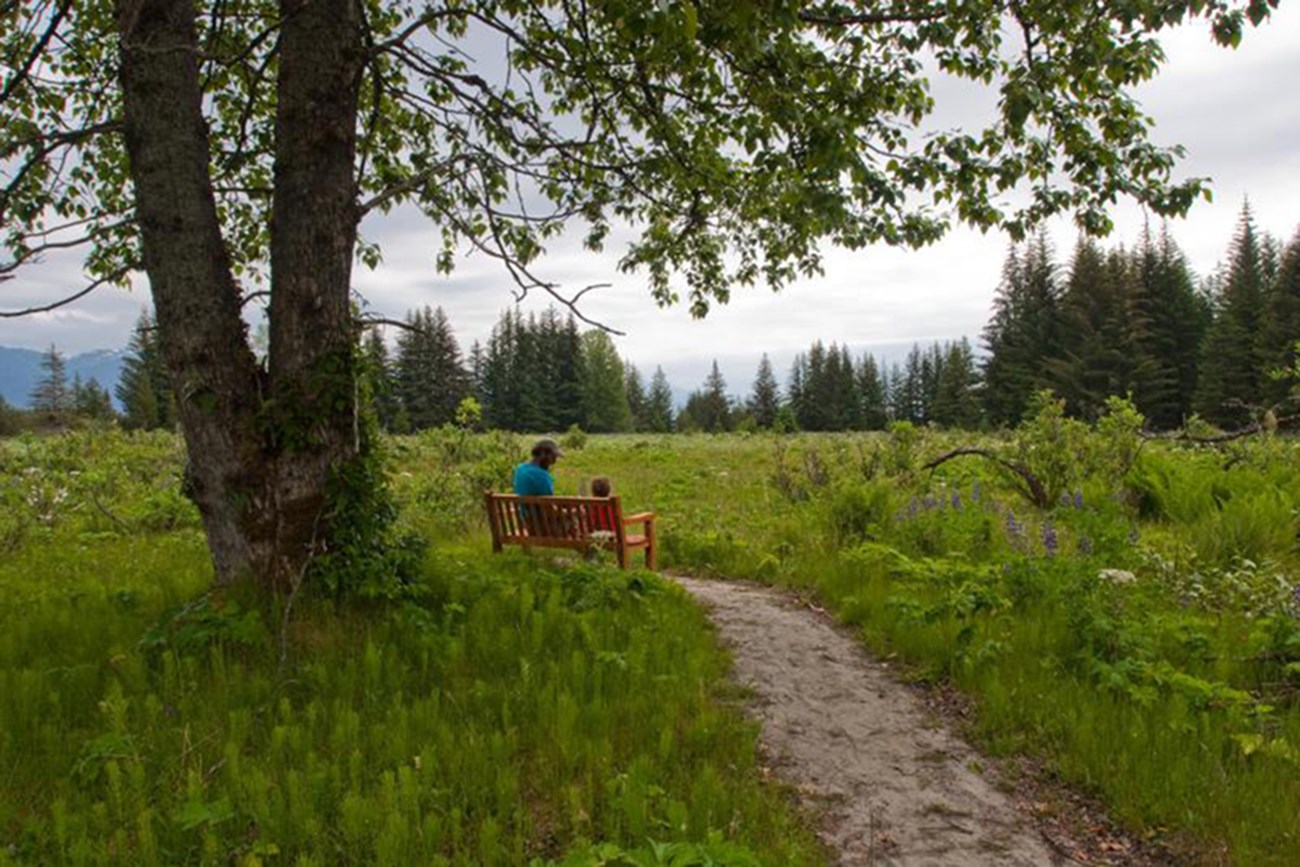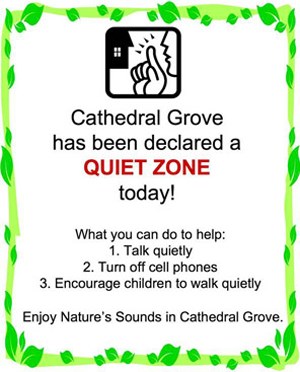
NPS
With one small change, you can make a big difference to a park's soundscape: Talk a little quieter the next time you visit a national park. By lowering your voice in parks, you greatly improve the soundscape. Now imagine if all park visitors did the same.
In a noise reduction study, researchers at Muir Woods National Monument asked visitors to be quieter in one zone of the park, i.e., talk quietly and turn off cell phones (see image below). The result was amazing. The sound level in that zone decreased 3 dba, which equates to a reduction of approximately 1200 people (Stack et al., 2011). No people were actually limited from entering the zone; they were simply asked to be a little quieter. In this way, you, too, can help protect and improve park soundscapes!
By taking steps to protect park soundscapes, you and others can hear and see more of our parks, including wildlife that might otherwise move away from noise sources.

NPS Photo.
Minimize Your Noise Footprint
-
Be aware that the noise you make could affect other visitors. Speak softly when having conversations, especially on trails and at campsites. Encourage friends and family to do the same.
-
Be considerate of campground quiet hours.
-
Look for mute options on electronic equipment such as cell phones, watches, or cameras.
-
Turn off cell phones and/or avoid using speakerphone.
-
Consider leaving personal music devices in the car or at home.
-
Avoid using external speakers that others can hear.
-
Participate in non-motorized recreational activities (e.g., hiking, bird-watching, snowshoeing, and canoeing).
Enjoy a Quieter Ride
-
Turn off car alarms and disable sounds on electronic door locks. (Check your vehicle owner's manual on how to do this.)
-
Use alternative transportation such as shuttles.
-
Turn off vehicle engines when stopped at wildlife traffic jams, train crossings, overlooks, or roadside pullouts. Idling vehicles create unnecessary noise and smog.
-
Keep car radio volume at a low level to avoid disturbing other visitors.
-
Turn off radios and open windows to hear interesting park sounds.
-
Drive at posted speed limits. (Driving faster creates more noise.)
-
Don't rev it up! Ride motorcycles respectfully in parks.
Plan for the Future
-
Reduce unwanted exhaust noise by replacing faulty mufflers or installing quieter models.
-
Check for Environmental Protection Agency noise certifications, especially for motorcycle exhaust systems.
-
To achieve a more pleasant ride and a quiet environment, install quiet tire models. Check tire noise ratings at Consumer Reports.
-
Rent a hybrid vehicle while on vacation.
-
Reduce and repair vehicle rattles and other problems that cause excessive noise.
What You Can Do At Home
-
When possible, use non-motorized tools for yard work (e.g., rakes instead of leaf blowers).
-
Consider noise when purchasing home appliances and yard equipment. (Manufacturers typically provide sound level information in product manuals.)
-
Be considerate of neighbors when operating motorized equipment.
-
Use mass transportation.
-
Join a carpool or ride your bike to work.
Check out these other ways to enhance your soundscape experience.
Reference
Stack, D. W., Newman, P., Manning, R. E., & Fristrup, K. M. (2011). Reducing visitor noise levels at Muir Woods National Monument using experimental management. Journal of Acoustical Society of America, 129(3), 1375-1380.
Last updated: January 3, 2018
